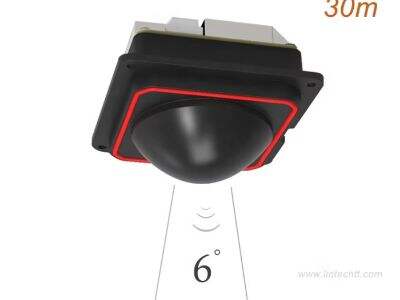Radar sensors are magic eyes that obviate everything, even in the worst conditions. And these special sensors are super important to ensure that liquid levels are managed without physically touching them at all. We at KYSAIL are professionals when it comes to watching over liquids in hard to get to places with radar liquid level sensors.
The advantages of employing radar level sensors in difficult conditions are tremendous.
Pretend you're trying to measure the level of a liquid in a big tank — full of everything but your liquid — with all sorts of things that can get in the way between the tank and your measurement. Radar sensors can penetrate through the clutter and provide an accurate range with no issues whatsoever. Which is very useful if the liquid is hazardous, or if the environment is simply too hot or too cold or too dirty for humans to get close to.
If you consult with a radar expert, you might be told that radar is akin to a superpower in the world of liquid level measurement.
Radio sensors instead bounce radio waves off the liquid and return with information, without ever physically touching the liquid. This allows us to take precise measurements without really getting our hands dirty. It’s as if you have a magic wand that can tell us exactly how much liquid exists there without even touching it.
There are obstacles in the way; sometimes very large ones that can make the task of measuring the level of the liquid extremely difficult.
But using radar sensors, we can do it easily. These sensors have special eyes to see through things like steam, foam, or in some cases even thick walls, to get us the measurements we need. This is super useful when dealing with difficult environments that might cause other sensors to get confused.
The advantages of non-contact radar sensors in harsh environments speak for themselves.
They’re tough sensors, and they’re reliable, even under difficult conditions. They are resistant to the heat, pressure and even corrosive liquids that would easily eat through plastic. This means they can be relied upon to provide us with true measurements in any case.
The reliability and accuracy of the measurements with radar liquid level sensors are indispensable for keeping things running smoothly.
The ability to plan ahead and not have any surprises is everything when we know how much liquid we have in a tank. “This sprays sheets of water in massive plumes, which is super important in, for example, oil and gas, chemicals and water treatment, where if you get something wrong even a bit, it’s a big problem,” Dr. Enright said. With KYSAIL radar sensors we don’t have to worry about our liquid levels anymore.
Table of Contents
- The advantages of employing radar level sensors in difficult conditions are tremendous.
- If you consult with a radar expert, you might be told that radar is akin to a superpower in the world of liquid level measurement.
- There are obstacles in the way; sometimes very large ones that can make the task of measuring the level of the liquid extremely difficult.
- The advantages of non-contact radar sensors in harsh environments speak for themselves.
- The reliability and accuracy of the measurements with radar liquid level sensors are indispensable for keeping things running smoothly.

 EN
EN
 AR
AR
 HR
HR
 CS
CS
 DA
DA
 NL
NL
 FI
FI
 FR
FR
 DE
DE
 EL
EL
 IT
IT
 JA
JA
 KO
KO
 NO
NO
 PL
PL
 PT
PT
 RO
RO
 RU
RU
 ES
ES
 SV
SV
 IW
IW
 ID
ID
 LV
LV
 LT
LT
 SR
SR
 SK
SK
 SL
SL
 UK
UK
 SQ
SQ
 ET
ET
 HU
HU
 TH
TH
 TR
TR
 FA
FA
 AF
AF
 MK
MK
 KA
KA
 UR
UR
 BN
BN
